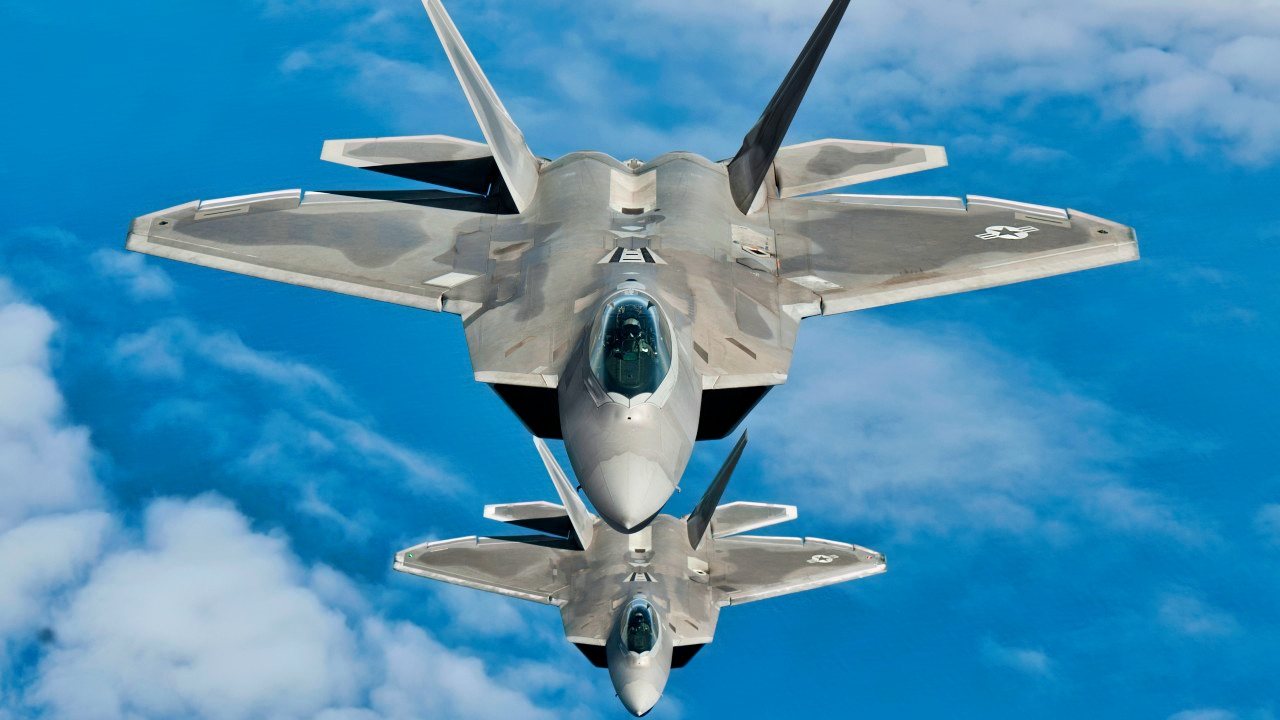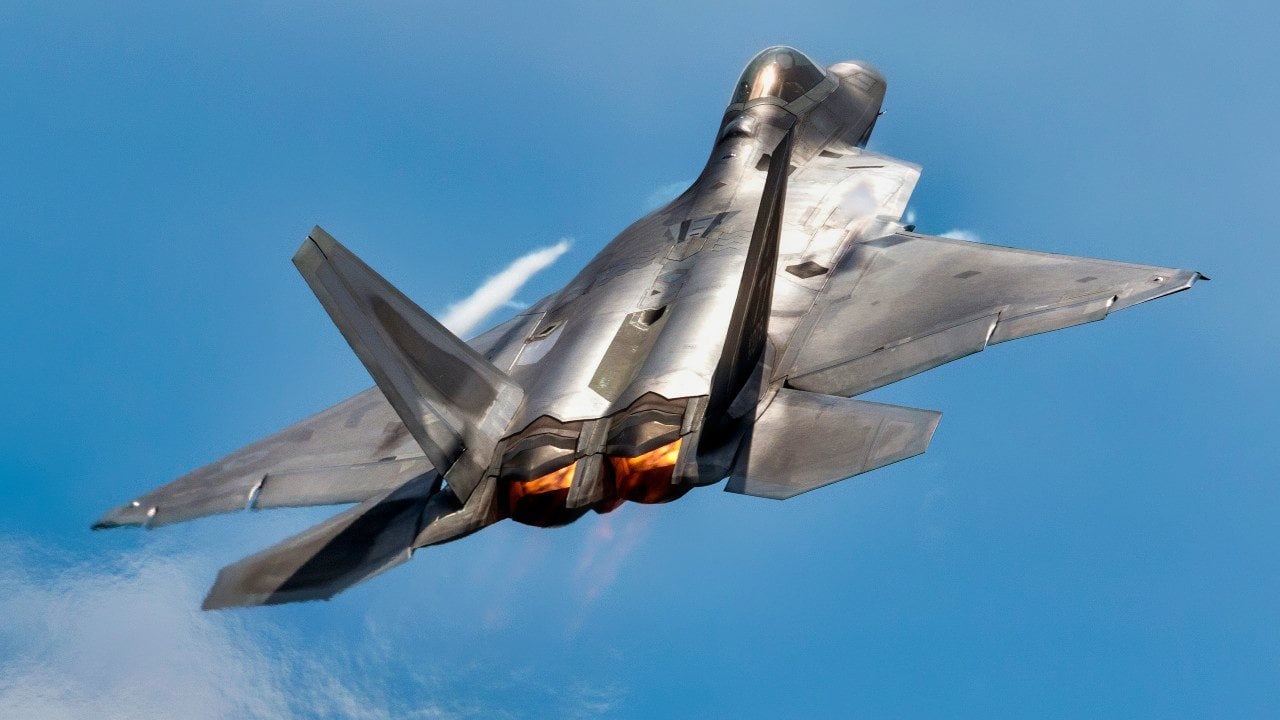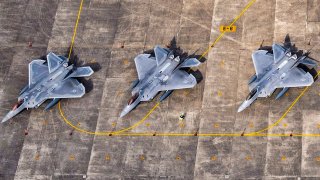F-22 Raptor: The Fighter Jet the Air Force Needs Until NGAD Flies
Andrew P. Hunter, the assistant secretary of the Air Force for Acquisition, Technology and Logistics, emphasized the importance of the Lockheed Martin F-22 Raptor as the "foundation" of U.S. airpower in competition with China.
Summary: Andrew P. Hunter, the assistant secretary of the Air Force for Acquisition, Technology and Logistics, emphasized the importance of the Lockheed Martin F-22 Raptor as the "foundation" of U.S. airpower in competition with China.

-Despite past plans to retire older Block 20 Raptors, the Air Force will modernize other F-22s until the Next Generation Air Dominance (NGAD) system is ready.
-NGAD aims to develop a sixth-generation fighter and a fleet of drone wingmen. Modernization efforts include stealth upgrades, new sensors, and extended range.
-While the F-22 remains crucial, it will eventually be supplanted by NGAD to maintain air superiority.
F-22 Raptor: The Backbone of U.S. Air Superiority Amid China Competition
One of the United States Air Force's top officials for overseeing the service's research, development and acquisition activities said months back that the latest models of the Lockheed Martin F-22 Raptor remain the "foundation" of the Air Force's airpower as it sees greater competition with China, Breaking Defense first reported.
Speaking at the McAleese Defense Programs conference, Andrew P. Hunter, the assistant secretary of the Air Force for Acquisition, Technology and Logistics, described the fifth-generation air superiority fighter as having "critical capability" and added, "So what's my highest priority in the near term for that great power competition? I'd probably put F-22 at the top."
Air Force officials had sought to retire an older group of Raptors, up to 32 of the aircraft from Block 20, as part of the fiscal year 2024 budget (FY24) budget request – so that the money to modernize those jets could be better spent on the service's Next Generation Air Dominance (NGAD) program. NGAD is more than a single aircraft and is actually a system of systems that seeks to develop a sixth-generation manned fighter and a planned fleet of drone wingmen.
As Breaking Defense also reported, five companies – Boeing, General Atomics Aeronautical Systems (GA-ASI), Lockheed Martin, Northrop Grumman, and startup Anduril have been selected by the Air Force for the first round of CCA work.
Lockheed Martin was awarded nearly $11 billion in 2021 as part of a decade-long contract to modernize the F-22 Raptor.
The F-22 Can Do The Job For Now – Maybe
Also speaking at Thursday's conference, U.S. Air Force Chief of Staff Gen. David Allvin said that the service is still focused on keeping certain F-22s "viable and relevant against the threat until Next Generation Air Dominance" enters service. He added, "We're looking to be able to take those that are the most combat-capable, keep them in the fight, and then leverage some of the resources for those that are going to be cost prohibitive and time prohibitive [to be upgraded]."
However, Air Force officials have also repeatedly made clear that maintaining older F-22s shouldn't come at the expense of slowing the development of NGAD or even impact the currently active F-35 Lightning II program.

"Lockheed is not fully staffed for engineers," warned Lt. Gen. Richard G. Moore, Jr., the Air Force's vice chief of staff for plans and programs, at the Mitchell Institute for Aerospace Studies last April, per Air & Space Forces magazine.
"So if we were to stand up an effort like this, it would be reasonable to expect they would have to pull some engineering talent off of F-35probably that means Block 4in order to get this accomplished. I don't think that is a [worthwhile] trade to us," Moore added at the time.
The Air Force is reported to be on track to spend more than $9 billion upgrading the remaining fleet of F-22 Raptors through the end of the decade. Upgrades will include stealthy external fuel tanks to extend their range, new sensors, and in under pods, and improvements to the fighters' stealth capabilities.
There have been concerns that the Block 20 Raptors may not be "competitive" with China's J-20 Mighty Dragon fighters. Moore further dismissed calls that the F-22 Block 20 fighters could be used for training, stating, "They will never be a part of the combat force. They don't have the most modern communications. They don't shoot the most modern weapons. They don't have the most modern electronic warfare capabilities."

As previously reported by The National Interest, on paper the J-20 has several significant advantages over the F-22, and the older Block 20 may not be the air superiority fighter the U.S. Air Force needs – yet the modernized Raptors certainly still have the claws to take down the Mighty Dragon. The F-22 will remain the fighter needed by the Air Force, but only until the NGAD takes to the skies.

Author Experience and Expertise: Peter Suciu
Peter Suciu is a Michigan-based writer. He has contributed to more than four dozen magazines, newspapers, and websites with over 3,200 published pieces over a twenty-year career in journalism. He regularly writes about military hardware, firearms history, cybersecurity, politics, and international affairs. Peter is also a Contributing Writer for Forbes and Clearance Jobs. You can follow him on Twitter: @PeterSuciu. You can email the author: [email protected].


